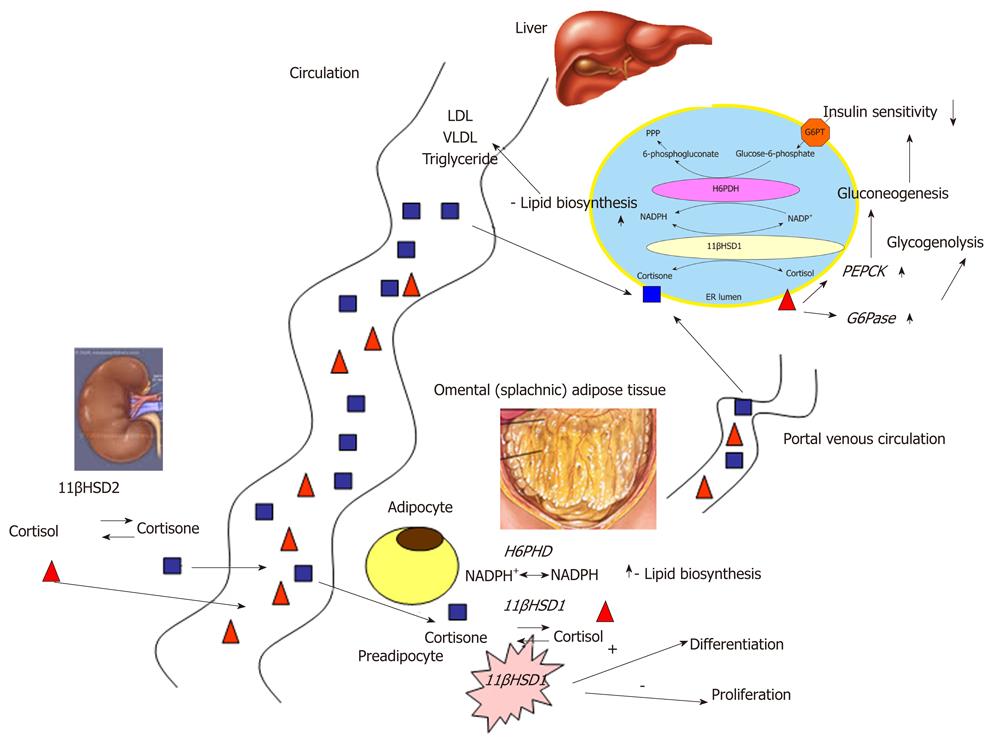Copyright
©2012 Baishideng Publishing Group Co.
World J Hepatol. Apr 27, 2012; 4(4): 129-138
Published online Apr 27, 2012. doi: 10.4254/wjh.v4.i4.129
Published online Apr 27, 2012. doi: 10.4254/wjh.v4.i4.129
Figure 2 The participation of the glucose-6-phosphate transporter-hexose-6-phosphate dehydrogenase -11β-hydroxysteroid dehydrogenase type 1 system in the pathogenesis of the metabolic syndrome.
The different, tissue specific localization of G6PT-H6PDH-11βHSD1 triad contributes to the pathogenesis of the metabolic syndrome both by its effect on local, tissue specific lipid and carbohydrate metabolism and by the systemic connection between the liver and the omental adipose tissue. Renal 11βHSD2 activity plays a crucial role in the maintenance of systemic connection. PPP: pentose phosphate pathway; G6PT: Glucose-6-phosphate transporter; H6PDH: Hexose-6-phosphate dehydrogenase; 11βHSD1: 11β-hydroxysteroid dehydrogenase type 1; NADP: Nicotinamide adenine dinucleotide phosphate; ER: Endoplasmic reticulum; VLDL: Very low density lipoprotein; PEPCK: Phosphoenolpyruvate carboxykinase.
- Citation: Czegle I, Csala M, Mandl J, Benedetti A, Karádi I, Bánhegyi G. G6PT-H6PDH-11βHSD1 triad in the liver and its implication in the pathomechanism of the metabolic syndrome. World J Hepatol 2012; 4(4): 129-138
- URL: https://www.wjgnet.com/1948-5182/full/v4/i4/129.htm
- DOI: https://dx.doi.org/10.4254/wjh.v4.i4.129









